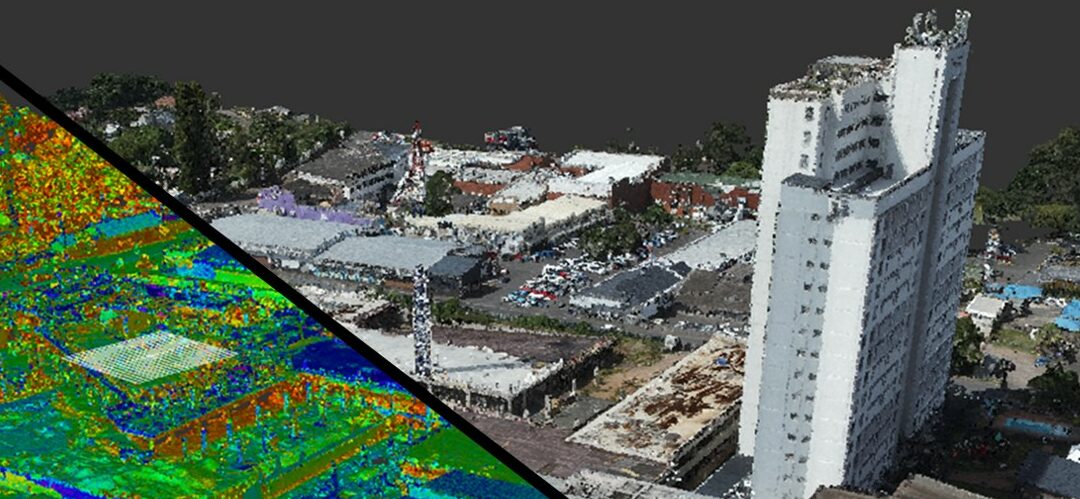The Digital Revolution in Mining: Terrestrial LiDAR Technology
As the mining industry embraces the digital age, one technology stands out as a pivotal player in the process of mine digitization: Terrestrial LiDAR technology. Let’s delve into what terrestrial LiDAR is, its wide-ranging applications in mining, and how it seamlessly complements drone photogrammetry, delivering unmatched precision and accuracy.
What is Terrestrial LiDAR?
Terrestrial LiDAR (Light Detection and Ranging) is a remote sensing technology that employs laser light to measure distances. They create detailed, high-precision 3D representations of objects and environments. In the mining context, terrestrial LiDAR systems consist of laser scanners that capture millions of data points per second. This allows for the creation of incredibly accurate 3D models.
Applications of Terrestrial LiDAR in Mining
- Terrestrial LiDAR is an invaluable tool for mining operations, offering numerous applications:
- Topographical Mapping: Terrestrial LiDAR can rapidly generate detailed topographical maps of mining sites, providing critical information for site planning and design.
- Volumetric Calculations: It accurately calculates volumes of stockpiles and excavations, crucial for resource management and inventory control.
- Slope Stability Analysis: By monitoring terrain changes over time, it aids in the assessment of slope stability, thereby mitigating the risk of landslides or collapses.
- Tunnel and Underground Mapping: Terrestrial LiDAR is used to create precise 3D models of underground mines, optimizing exploration and maintenance.
- Environmental Monitoring: It plays a pivotal role in environmental compliance by tracking changes in vegetation, water bodies, and land use.
The Precision and Accuracy of LiDAR Data. The standout feature of terrestrial LiDAR technology is its exceptional precision and accuracy:
- High Density Data: LiDAR systems capture a vast number of data points per second, resulting in dense and accurate point clouds that faithfully represent the real-world environment.
- Millimeter-Level Precision: Terrestrial LiDAR can measure distances with millimeter-level precision, making it indispensable for tasks where accuracy is paramount.
- Subsequent Analysis: The high-quality data obtained from LiDAR scans facilitates in-depth analysis, enabling engineers to make informed decisions and predictions.
Complementing Drone Photogrammetry in Digitization. While drone photogrammetry excels in capturing aerial imagery, terrestrial LiDAR provides a ground-level perspective. These technologies work in synergy, complementing each other seamlessly:
- Comprehensive Data: The combination of aerial and ground-based data captures the entire mining site, leaving no room for information gaps.
- Improved Precision: Terrestrial LiDAR enhances the precision and detail of 3D models, creating more accurate digital twins.
- Enhanced Safety: In hazardous environments, terrestrial LiDAR ensures ground-level data collection without risking personnel safety.
The partnership between terrestrial LiDAR and drone photogrammetry is a winning formula for mine digitization, delivering comprehensive, accurate, and high-quality data. As the mining industry continues its digital transformation, the marriage of these two technologies becomes increasingly pivotal, setting new standards for efficiency, safety, and operational excellence.

Recent Comments